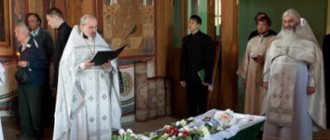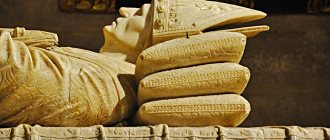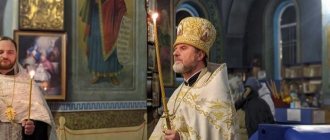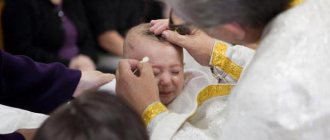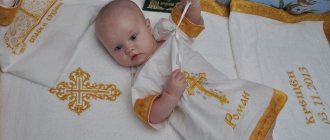There are only two events that necessarily happen to every living being, without exception: birth and death. Both of them are accompanied by a large number of customs and ritual actions. This is especially true for death and subsequent burial. The modern funeral ritual has been significantly reduced: among Russians in ancient times, burial took the same amount of time as wedding festivities. Below is how funeral rituals have changed from ancient times to the present day.
Elements in funeral rituals
Since ancient times, what should be done with the body of the deceased has been determined by local customs and depended on what element the population worshiped. After death, the bodies were burned, buried in the ground, and the deceased were given water. And they even hung them in the air, on tree branches.
The relationship of the people with the elements differed from region to region. Among the ancient Slavs there were fishermen, farmers, and warriors. Russian paganism also went through fire worship. Therefore, it cannot be said that Russian funeral traditions were uniform throughout the territory.
Neighbors had considerable influence on local funeral customs. Thus, the northern tribes, who had been in contact with the Scandinavians for many centuries, buried men and women in fire and water: they equipped a funeral boat, sent it to the water and set it on fire. A reflection of the tradition has long been observed in the form of coffins - they were made to look like boats, in fact, they were simply hollowed out of logs.
The Asian neighbors of the steppe people preferred to build mounds of earth over their dead men and women or erected “houses” - low dugouts, a kind of wooden crypts. But even in this case, the deceased was burned before being buried in the ground. They believed that, together with the smoke during the funeral ritual, the soul of the deceased goes to heaven, and the ashes, uniting with the land of their ancestors during burial, preserve their descendants.
Gradually, as agriculture became the main activity of the peaceful Slavs, Russian funeral rites became closely connected with the land. This was also influenced by the dominant religion, Orthodox Christianity. Only from the moment of the baptism of Rus', fire burial was gradually replaced by the burial of the body, which is customary today.
Funeral traditions in Rus'
Funeral rites in Rus' have always been treated with reverence and seriousness. From ancient times, a huge number of traditions associated with funerals have come down to our time. Moreover, the meaning of many traditions has long been forgotten, and people still bury them as their ancestors did, believing in the sacred meaning of their actions.
The following are the most common funeral traditions among Orthodox Christians:
- A person on his deathbed asks for forgiveness from those he has offended, and he himself forgives the offenders.
- At the cemetery, those present walk around the coffin, bow, ask for forgiveness from the deceased, and kiss the forehead.
- The coffin is lowered into the ground with its head facing east.
- The burial ritual involves “sealing” the deceased in the ground. The procedure is performed by a clergyman.
- It is wrong to bury a Christian with music. The funeral of Orthodox Christians is conducted by a priest.
- Relatives of the deceased order Sorokoust - a daily commemoration - from the church.
- A cross or a monument with the image of a cross is placed on the grave of a Christian.
- Contrary to popular belief, you cannot eat food in a cemetery.
- There should not be a cross on the grave of a suicide. Churchmen do not consider suicides to be people who died from an accident or a criminal attack.
IMPORTANT! The days of remembrance of the dead are considered to be five Saturdays (Meat, Trinity, three Parents), also Radonitsa, the day of the Beheading of John the Baptist.
The most ancient funeral customs
Belief in an afterlife is inherent in every culture. Only the ideas of what the afterlife is like differ. For some, this is a place of eternal suffering of the soul of the deceased, for others - a place of feasts and idleness. Still others see the afterlife as the final repose of the soul in bliss. Cultures have one thing in common: denial of non-existence, unwillingness to believe in the finality of death.
Already the very first Paleolithic burials confirm this. It was customary to lay the dead in the ground in a fetal position: with legs pulled up to the chest, on their sides. This symbolized the transition of a person from one life to another. In later burials of Neanderthals, parting gifts are found that the reborn person will need in his new life: household items corresponding to the occupation of a man or woman.
Funeral in Orthodoxy
Orthodox funeral and memorial traditions teach us to look at the lifeless body of a believer with tremendous respect. Even in the hands of death, he remains a member of the Church of Jesus, and his body is considered a temple where the Holy Spirit previously resided. Over time, this body, according to the laws of the Church, will come to life and acquire the qualities of incorruptibility and immortality.
Orthodoxy about death:
- Tests of the soul after death
- How to cope with the death of a loved one
- What is a funeral service and how to properly remember the dead
Orthodox funeral
Each nation showed special attention to the bodies of its deceased fellow citizens. Funeral rites expressed individual spirit and care for the deceased. The Jews performed short rituals, avoiding embalming and cremation; they anointed the bodies with incense, wrapped them in thin linens and placed them in caves.
In memory of the deceased, they broke bread, sprinkled ashes on their own heads, and often observed a mourning fast.
Preparation for burial
The traditions of funerals and wakes have the deepest meaning and are based on the ancient rules of the first Christians.
- The body of a follower of the Christian faith is washed immediately after physical death. This ritual is performed as a sign of the absolute purity and purity of the spirit, which will appear in a similar form before the eyes of the Lord. All parts of the body are washed: use warm water, ordinary soap and a soft cloth (sponge).
- Simultaneously with the ritual, the Trisagion hymn is read, and a lamp is lit, which must burn as long as the body of the deceased is present in the room. Elderly people or clean women who have taken a bath themselves are allowed to participate in the ablution ritual.
- After this ritual, the body of the deceased is dressed in new and washed clothes, which symbolizes the incorruptibility and immortality of the soul. Soon after death, a Christian will appear at the Judgment and give an account to the Almighty Creator for the life he has passed.
- An Orthodox cross is put on the person, and the limbs are tied. Hands are carefully folded on the chest so that the right one is on top. A small icon is placed in the left right hand (for men it is the image of Christ, for women it is the image of the Virgin Mary). This shows that the deceased believed in the Son of God, betrayed his own soul to Him, and now moves on to the eternal, most pure and reverent contemplation of the Holy Trinity.
On a note! To reinforce the authority of the ablution ritual, they use the testimony of writers who lived after the apostles. Detailed instructions for performing the ritual are described here. In the past, Christians took sacred care of the body of the deceased, washing it and singing the psalms of King David.
Orthodox funeral
Burial and its sequence
- At the death of an Orthodox believer, a canon of eight songs compiled according to church rules is read. It is used because a person experiences a natural feeling of fear before death. The clergy confirm: the soul succumbs to this affect when separated from the physical shell, to which it is very accustomed.
- It is especially difficult for a person’s consciousness in the first 3 days after death: here people see Guardian Angels who accompanied them all the time after the Baptism ritual, as well as evil spirits that cause horror with their disgusting appearance.
- The canon should be read so that the soul of the deceased finds peace in the afterlife. Relatives are obliged to find courage and say goodbye to their deceased relative by fulfilling a prayer request before the Heavenly Father.
- Before burial, the body of a Christian and his coffin are symbolically sprinkled with holy water. A whisk is placed on the forehead of the deceased, which is given by the priest for the funeral service. This symbolizes that the Orthodox believer left the field of action with honor, having won the struggle against painful life and frightening death. On the aureole are the faces of the Son of God, the Mother of God and St. John the Baptist, as well as the inscription “Trisagion”.
- A cotton pillow is placed under the head and shoulders of the deceased Christian, and the body is covered with a white sheet. More often, the coffin is placed in the middle of the room in front of the home iconostasis; the face of the deceased should look at the images of the saints. Candles are lit around the deathbed, heralding the deceased believer's passage into the realms of light and tranquility.
Interesting! Monks and priests are traditionally not washed after their death. The first ones are dressed in a specific robe and wrapped in a mantle in a cruciform manner. The monks' face is covered, indicating its distance from worldly passions during earthly existence. Priests are dressed in church clothes, and a covering is placed on their heads, indicating the involvement of the confessor in the Mysteries of the Lord.
Prayers after ablution
When the body of a deceased Christian has been cleansed of worldly defilement, they begin to read the canon, which is called “The Sequence of the Exodus of the Soul from the Body.” In the chorus, people ask the Lord for the repose of the deceased, and at the end they ask for eternal help. This canon helps to alleviate the mental suffering of a deceased person, who immediately after death experiences irresistible bitterness from parting with the body and the outside world.
About funeral prayer:
- Prayer of the Mother of God for the newly deceased
- Prayers for the repose of the soul of every deceased Christian
- Sorokoust for the repose
Singing song 5, the clergy and relatives ask the Almighty to generously pardon the deceased. In song 4 there is an appeal to the Holy Trinity, which is capable of illuminating with true light a soul darkened by the vanity of worldly life.
The initial troparion is a praise to the Mother of God, who gave birth to the Savior without a seed. The living ask for the salvation of a deceased person.
Next, for three days, the words of the Psalter are raised over the body of the deceased, which is divided into 20 parts (kathisma) and begins with a petition from the Lord for mercy. Each kathisma contains a threefold exclamation of “Glory,” which demonstrates the power and mercy of the Heavenly Father. Then prayers are chanted.
Psalter
The Psalter is read without interruption until the coffin is buried. Pious friends are allowed to sing, since family members have a lot of chores to do in organizing the funeral. The Psalter is of enormous importance in the ritual of farewell to the body.
He vividly reproduces emotional emotions, sympathizes with joy and sadness, and sheds a bright light of consolation into the grieving hearts of loved ones. The Church allows the text of the Psalter to be pronounced at its own discretion: the idea arises that the deceased independently turns to the Almighty for the sake of pardon.
Rituals in the temple
One hour before the removal of the body from the house, the canon about the exodus of the soul is read. According to tradition, the deceased is carried out feet first. During the removal, a prayer is sung in honor of the Holy Trinity. This suggests that the deceased sincerely confessed to the Lord and from now on moves into the Kingdom of Heaven, where he will dwell as a disembodied spirit, surrounding the Throne and singing praise.
- When the body is brought to the temple, it is placed in the middle, facing the sacred altar, and lamps are lit on 4 sides. The Church teaches: on the 3rd day of death, the thin shell (soul) of the deceased Christian experiences terrible suffering, although the body remains dead and lifeless. During this difficult period, the deceased is in dire need of help from the clergy, so specific canons and the Psalter are read over his coffin, as well as a funeral service, which consists of liturgical chants that briefly illustrate the fate of a person.
- Sinfulness does not kill the glory of the Lord in the human soul, therefore the Church asks for mercy and the right of every righteous person to enter the Heavenly City.
- To support humanity and rid the hearts of people from the sadness and dangerous doubts that are sometimes born at the sight of death, the Apostle Paul majestically consoles us, transferring religious thought beyond the limits of corruption and revealing the divine secrets of the wondrous transformation of dust into the eternal spirit. In addition, Jesus the Savior himself, dressed in the robes of a priest, allegorically encourages the relatives of the deceased when the Gospel of John is read in the temple. After this, a prayer of permission is proclaimed, destroying the worldly sinfulness of the deceased Christian.
- The farewell ritual consists of kissing and singing touching stichera over the coffin, which says that the deceased leaves frailty and vanity, finding peace by the mercy of the Almighty Lord. Relatives humbly walk around the coffin, bow and ask to forgive them for the absurd insults inflicted. The last kiss is directed at the aureole or small icon located on the chest.
Orthodox funeral service
- Finally, the deceased is covered with a sheet, and the priest sprinkles the body with earth in a cross-shaped motion, pronouncing sacred words. The coffin is sealed and never opened again. When the deceased is taken out of the temple, the relatives sing the Trisagion.
On a note!
If the church is located at a great distance from the home of the deceased Christian, an absentee funeral service is performed, which is ordered by relatives in the nearest monastery. After the ritual, a prayer book of permission is placed in the right hand of the deceased, and a paper whisk is traditionally placed on the forehead; During farewell, the body, wrapped in sheets, is sprinkled with earth in a cross pattern.
The actual burial ritual
In the grave itself, the deceased person is turned to face the East, which symbolizes the expectation of the church morning (second coming) of the Son of God. When the coffin is slowly lowered into the prepared space, the Trisagion prayer is sung again. Before burying, everyone present throws a lump of earth into the hole. This speaks of submission to a higher providence.
The cross, which is a symbol of salvation, is placed at the feet of the deceased. From now on, a Christian who believes in the crucified Savior rests in the long sleep of death under the care of the Father. The cross must be of the correct shape and eight-pointed.
Oil of oil is not traditionally poured on a dead body or placed in a coffin, but is only used during life for healing.
Orthodox tradition blesses people who help carry out the rituals of washing, putting on clean clothes and burials. It is believed that these actions are the last and necessary mercy that we are able to provide for a Christian who has passed into another world.
Parting gifts
The custom of burying men and women with gifts has not completely disappeared to this day. However, the ancient Russians did this on a grand scale.
What was given in the past
The richer and more noble a person was, the more generous gifts accompanied the deceased to the ground.
- Men were given weapons or craft tools at burial.
- Women were given jewelry and household utensils as funeral gifts.
- Along with the noble deceased, they buried killed horses, dogs, several fellow tribesmen and even his wife.
It should be noted that the man’s wife and servants made such a sacrifice voluntarily; it was considered honorable. And after the funeral, according to custom, they always organized military competitions and a magnificent feast, at which it was not customary to mourn and cry.
What are they giving today?
The Orthodox Church disapproves of attempts by parishioners to accompany funerals with gifts. It is considered correct to bury men and women in the form in which they would be admitted to church: in modest, discreet clothing without unnecessary decoration. For women, according to the church canon, a skirt and headdress are required.
However, grieving relatives still try to turn the coffin into a camp set, putting the deceased’s favorite things into it before burying it. Most often in Russia they place in a coffin:
- handkerchiefs;
- Cell phones;
- watch;
- money;
- combs;
- sweets.
But all this is considered unnecessary and is not approved by the Orthodox Church tradition.
Why do Christians call the deceased “deceased”
In the eyes of the Christian Church, Orthodox and Catholic, all earthly life is considered preparation for a more important, afterlife. It is believed that when a person dies, the immortal soul goes to God's private judgment, and the body of the Orthodox sleeps in the ground, awaiting the general resurrection and the Last Judgment. That is why in Orthodoxy the concepts of “deceased”, that is, sleeping, and “deceased” - calm, arose. Russian funeral rituals require that the inside of the coffin be furnished like a bed—as if the body were being laid to sleep rather than buried.
Preparing for the ritual of passage to another world
Contemporaries prefer to avoid the topic of death, not to talk about it, so as not to provoke it prematurely. Keeping items associated with funeral rituals at home is also considered undesirable.
At least for healthy young men and women. And there is no need to do this: in the city everything you need can be bought at any funeral service.
According to custom, old people are allowed to have the necessary things at hand: clothes, bedspreads, towels, candles. But among our ancestors it was customary to prepare for death and funerals in advance.
Preparation customs of the past
If the family had an elderly or sick relative, a coffin for him was made in advance and stored in the attic of the house. Grain was poured inside the coffin: keeping the coffin empty was considered a bad omen. On the day of burial, the grain was given to the birds.
The dying man tried to do good deeds shortly before his death: he gave away debts and alms, and forgave insults. Feeling the approach of death, the dying person lay down on a bench or on the floor under the icon, and the children of the dying person dismantled the corner of the roof to allow the soul of the deceased to come out.
Orthodox canons
The Christian religion takes care of the soul of the dying. Therefore, his soul begins to be prepared for the afterlife even before the transition.
- While the dying person is alive, an Orthodox priest is invited for the ritual of unction. The sacrament takes place in the presence of loved ones. They hold lit candles while the priest reads prayers.
- If the dying person is conscious, it is necessary to ask him for forgiveness for the offenses and receive such forgiveness from him.
- After unction, the dying person is confessed and given communion.
- At the moment of death, the canon is read. This is done either by the priest, or, if he is not nearby, by any of the dying person’s relatives. If the soul of a dying person departed while the canon was being read, it is completed with the so-called funeral chorus. The texts of the canons that need to be read are in the prayer book.
- It happens that a dying person suffers for a long time, but the soul does not want to leave the body. In this case, one special canon is read to the dying person, “The rite performed for the separation of the soul from the body, never a person suffers for a long time.”
Length of legs, burnt straw and lamentations
Vasily Perov. Return of peasants from funerals in winter. 1880s
In Osinovitsa, in the Smolensk region, they compared the length of the legs of the deceased: if his left leg is longer, a woman will die next in the village, and if his right leg is longer, a man will die.
A pillow was placed under the head of the deceased, which was stuffed with dry leaves from birch brooms. They laid the deceased on a bench on straw covered with white linen. After the funeral, this straw was taken to the field and burned, watching where the smoke would go: “If it goes to the house, then it’s good, but if it goes to the fields, then, they say, everything will be pulled along with it, the house will be bad, empty.”
After the deceased was washed and placed on a bench, they began to lament and wail. But certain prohibitions were imposed on the performance of lamentations. It was forbidden to shout in the dark and especially at night. Pregnant women were not supposed to vocalize, “otherwise the child would be restless.”
Washing and dressing: bodily cleanliness
Russian funeral custom requires washing the body. Any adult is allowed to do this. There is only one obligatory condition - it must be Orthodox. When washing the body, one should read the Trisagion, “Lord, have mercy.” The eyes and mouth of the deceased must be closed.
After washing, the body is dressed. Russian funeral customs require dressing the deceased in clean, preferably new, clothes. Russian men and women traditionally dress as they would when going to church. An exception according to custom is made for unmarried girls: they are usually buried in their wedding dress. Women must wear a headscarf or scarf for burial; men are buried with their heads uncovered.
Dead man awaiting funeral
The deceased is laid on a bench with his head to the east. To prevent his eyelids from opening, coins are placed on them. Hands are folded on the chest, right on top of left, and fixed. The body is covered with a shroud. A corolla is placed on the forehead - a strip of paper with the text of the Trisagion Song and images of the Mother of God, John the Baptist and the Savior. The corolla is a symbol of the Crown of Glory, a reward to an Orthodox Christian for fidelity to the faith. Four candles are placed in a cross pattern around the deceased: at the head and foot, and a couple on the sides.
Immediately after death, the Guardian Angel meets with the soul of his ward to guide him past the demons gathered around. To weaken evil forces, close or invited church ministers read the Psalter and the canon. If the body is kept in the morgue, you can read it at home.
Before being taken out of the house, the coffin and the deceased are sprinkled with holy water, after which the priest reads a funeral litany. Echoes of the ancient tradition of helping the soul to ascend with smoke can be seen in the tradition of fumigating the body with incense. During the reading of the Trisagion, the deceased is carried out into the courtyard by men, feet first.
The funeral service can be held at home, in a church or in a cemetery. It is customary to bury and perform a funeral service for the deceased on the third day, because according to the church canon, only at the end of the third day does the soul leave the earth. They must be buried before sunset, with their heads to the west. However, the way Russian funerals take place is regulated not only by church canons, but also by the realities of modern life. In the city, church tradition is difficult to maintain, so people are buried on the second day, and church services are limited to the funeral service.
Rituals after the funeral
Rituals carried out after a funeral involve funeral meals in the home of the deceased or in a neutral place. Conducting a memorial according to the Orthodox tradition implies the right approach: it should not become a noisy drunken feast, those commemorating should express grief through mourning clothing and appropriate behavior. Anyone can come.
The funeral table should be based on:
- Kutya;
- pancakes or pancakes;
- pies;
- fish;
- aspic;
- vodka.
Women cover their heads in black for 40 days. Young widows and mothers who have lost a child go in mourning for up to a year. Men wear mourning clothes during funeral rites, but in everyday life they can use a regular wardrobe. On mourning days, participation in festivities and entertainment events is unacceptable.
Remembrance of the Dead
Three days are associated with the commemoration:
- Third day after death. It is believed that the soul wanders around its native places for the first two days. And he ascends to the Heavenly Kingdom on the 3rd day.
- Ninth day. According to church tradition, you need to remember the dead, pray, and make a bloodless sacrifice. The deceased is led through the Garden of Eden for 6 days, where he praises God and asks for forgiveness for his sins.
- Fortieth day. Prayers are read, bloodless sacrifices are offered, and the dead are commemorated. The soul descends to Hell, where it sees the torment of sinners. Then he waits for God to decide his fate.
INTERESTING TO KNOW! Many believers note that after 40 days the heart becomes lighter, and the spirit of death disappears from the house.
Ritual paraphernalia
According to the church canon, it is not allowed to put anything unnecessary into the coffin. Mandatory attributes of the burial ritual are:
- bedspread and pillow;
- shroud;
- church paraphernalia: crosses on the neck and hands, a whisk, a prayer of permission, an icon of the Savior for men or the Mother of God for women.
After burial, wreaths and fresh flowers are placed on the grave, and a wooden cross is installed with an attached sign indicating the details of the buried person. In former times, burial was limited to the cross. The tradition of erecting monuments after a year from the date of death arose relatively recently, and came to Russia from Catholic countries. In the villages they often remain faithful to the old custom and do not make monuments.
Funeral signs and folk traditions
- When the body is placed in a coffin, the hands and feet of the deceased are tied. The bonds must be cut before burial. Relatives must ensure that no one takes the ropes with them - they are the strongest attribute for black magic.
- While the deceased is at home, they do not leave him alone - they protect the soul of the Orthodox deceased from demons.
- It happens that relatives want to put photographs “as a souvenir” in the coffin of their dear deceased. You can't do this. The sign says that the person whose image is buried in this way will soon go into the ground after the dead man.
- It is not customary for deceased men to wear a tie, and for women - a bra.
- The tradition of covering mirrors before burial does not belong to Orthodox funeral rituals and is considered pagan.
- In the old days, it was believed that the deceased should definitely be mourned, only in this way his soul would be satisfied and pass away unhindered. Today, Orthodox priests, on the contrary, exhort loved ones to let go of the soul without tears and sorrow, so as not to keep the soul to themselves.
- Nothing is taken out of the cemetery after the funeral.
- The water remaining after ablution must be poured onto the ground outside the yard, where people do not walk. It is better to do this under a living tree.
- Soap, which was used to wash the deceased, was highly valued in the old days. It was believed that it prolongs the beauty of women and pacifies male anger.
- It was believed that death often returned to the house to take someone else. To ward off, “cut off” death, one of the male relatives took an ax and, holding it with the blade forward, walked around the coffin three times, and then hit the lid with the butt. After removal, the ax was placed on the threshold.
- Russian funeral rites require that after removing the coffin, the floor must be washed with water alone, without changing it.
Funeral customs
According to the church canon, Christians hold funerals three times: immediately after burial, on the ninth and fortieth day. Days are counted from the moment of death, not burial. These mourning ceremonies are not a simple meal, but a whole ritual, the main thing in which is to remember the deceased and his good deeds during life. An Orthodox church service must be ordered for each of these days. Before the meal, guests must wash their hands, make the sign of the cross and recite the Lord’s Prayer together.
As a first course, Russians serve kutya, a sweet porridge made from wheat or rice grains. The dish for the funeral ritual must be blessed. Traditionally, each guest is obliged to try it.
Traditional funeral dishes among Russians were pancakes with honey, syta (honey diluted with water) and jelly. Today they have been replaced by more modern dishes: not a single Russian funeral ritual is complete without pies and compote. Traditionally, there is no thanks for the treat.
More rituals associated with funerals
There are also a large number of rituals that are performed depending on the situation. In order, according to the Bible, to make it easier for a person in the next world, various rituals and procedures should be carried out, because their correct implementation is very important in Christianity.
Man on the verge of death
If a person is on his deathbed, the priest should be called to him for confession or so that he can repent and pray for his possible sins. Also, this right should be granted to those who have not been adherents of the Orthodox Church throughout their lives. This tradition is also connected with the fact that people who were not Christians cannot be buried in churches and buried in Orthodox cemeteries. And for this reason, their souls go to the next world uninveterate and appear before the Lord God as sinners.
It should also be taken into account that relatives cannot in any way influence the possibility of a funeral service, since if they conceal the fact that the deceased was not a Christian, they will thereby incur a terrible sin.
Fatal illness
In the event of a fatal illness, one should pray for the forgiveness of the sins of the sick person who could have received them in worldly life. For good health, you can light a candle and call a priest to a relative so that he can confess the patient and, if necessary, atone for his sins during his lifetime. This procedure will help the human soul after death.
Before the funeral
After a person has died, the first step is to complete all the necessary documentation. The main document is the death certificate form. This document is issued by a doctor. He does this if a person dies in a hospital (if he was sick or was on his deathbed); or a local doctor who arrived at the house on a private ambulance call.
In addition to the death declaration form, a protocol for examining the body of the deceased should be drawn up, which should be drawn up by law enforcement officers; they should be called immediately after the death. They can also arrange a referral for a forensic autopsy if they consider the death to be unnatural. Often, if a person was very old or had serious health problems (as evidenced by a medical record and medications), such a referral is not issued.
In general, it is imperative to collect the following documentation:
- form for ascertaining the death of a person;
- ID of the deceased;
- the passport of the person who will directly handle all paperwork;
- medical card and insurance policy of the deceased;
- body inspection report.
You should go to the clinic and the reception desk with all the papers. If there are no suspicions of non-violent or unnatural death, the district police officer issues a corresponding certificate addressed to the head physician of the district clinic. This paper is needed to obtain a medical certificate of death.
However, it can only be obtained if there is an outpatient card of the deceased in the hospital, which will display the presence of any disease and dynamic indicators of his general condition. If such evidence is not available, the hospital may refuse to issue a certificate.
If such a situation occurs, the chief physician has the right to send the body for a pathological examination to identify the exact causes of death. Based on the evidence received, after the autopsy, a medical death certificate is issued or the investigation procedure begins with all subsequent procedures.
In the temple
Previously, it was customary to leave the coffin with the deceased in the temple overnight so that more relatives and acquaintances of the deceased could participate in the funeral prayer. This reading took place throughout the night and ended only with the onset of morning.
Commemoration on the 3rd, 9th and 40th days
The commemoration takes place at:
- Day 3 - the funeral ritual is carried out according to the apostolic tradition, since any believer is baptized in the glory of the Trinity. During the first two days, the soul of the deceased wanders near his own home, in which the funeral service should take place at this time.
- Day 9 - at this time the Orthodox Church conducts prayer requests and makes bloodless sacrifices. For 6 days, the beauties of Paradise are revealed to the deceased, and the soul glorifies the Lord God, while all worldly suffering and pain that were ever associated with the body are forgotten. At the same time, sinners reproach themselves by admiring the beauty of Paradise until they receive Divine pardon.
- 40-day period - in the period from 9 to 40 days, the soul of a deceased person is shown the halls of hell, in which various nightmarish sufferings and tortures of sinful souls are demonstrated. At this time, the church conducts petitions, reads prayers and makes bloodless sacrifices to obtain benefits for the deceased Christian. After 30 days of wandering through the halls of hell, the soul goes back to worship and waits for what kind of decision the Lord God will make and what place he will determine.
After 40 days
After 40 days have passed since the death of a person, you can and even need to order a memorial service for the deceased. It is during this period that the soul returns to the Lord God so that he can determine exactly where the person will end up.
A memorial service is a funeral service for the dead, which consists of a series of prayers and is performed in a church. The main task of such texts is to rely on God’s mercy for the forgiveness of various acts and sins of the deceased during his lifetime and the granting of blessed eternal life to the soul. Such prayers are usually held not only before the burial of a body, but also on the 3rd, 9th and 40th day after the death of a person. After 40 days, memorial services should be performed on the birthdays of the deceased and anniversaries of death.
Death anniversary
On each anniversary of a person's death, a wake is held. It is also better to set the table for them, including all the special items from the funeral menu. In addition, according to Christian customs, these days it is customary to order a memorial service in the church, which should help the deceased live better in the Kingdom of the Lord.



